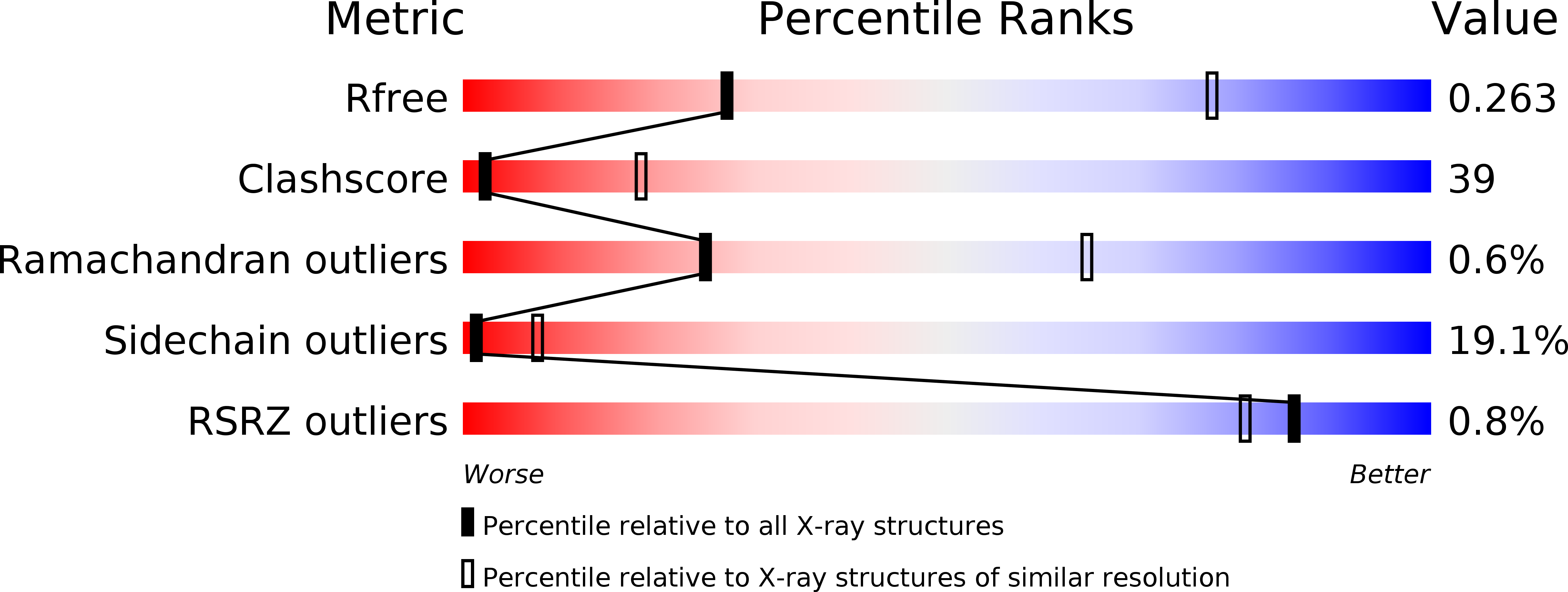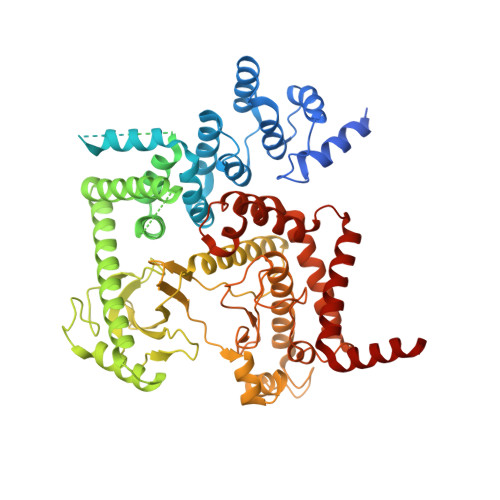Shaping Development of Autophagy Inhibitors with the Structure of the Lipid Kinase Vps34.
Miller, S., Tavshanjian, B., Oleksy, A., Perisic, O., Houseman, B.T., Shokat, K.M., Williams, R.L.(2010) Science 327: 1638
- PubMed: 20339072
- DOI: https://doi.org/10.1126/science.1184429
- Primary Citation of Related Structures:
2X6F, 2X6H, 2X6I, 2X6J, 2X6K - PubMed Abstract:
Phosphoinositide 3-kinases (PI3Ks) are lipid kinases with diverse roles in health and disease. The primordial PI3K, Vps34, is present in all eukaryotes and has essential roles in autophagy, membrane trafficking, and cell signaling. We solved the crystal structure of Vps34 at 2.9 angstrom resolution, which revealed a constricted adenine-binding pocket, suggesting the reason that specific inhibitors of this class of PI3K have proven elusive. Both the phosphoinositide-binding loop and the carboxyl-terminal helix of Vps34 mediate catalysis on membranes and suppress futile adenosine triphosphatase cycles. Vps34 appears to alternate between a closed cytosolic form and an open form on the membrane. Structures of Vps34 complexes with a series of inhibitors reveal the reason that an autophagy inhibitor preferentially inhibits Vps34 and underpin the development of new potent and specific Vps34 inhibitors.
Organizational Affiliation:
Medical Research Council Laboratory of Molecular Biology, Hills Road, Cambridge CB2 0QH, UK.















